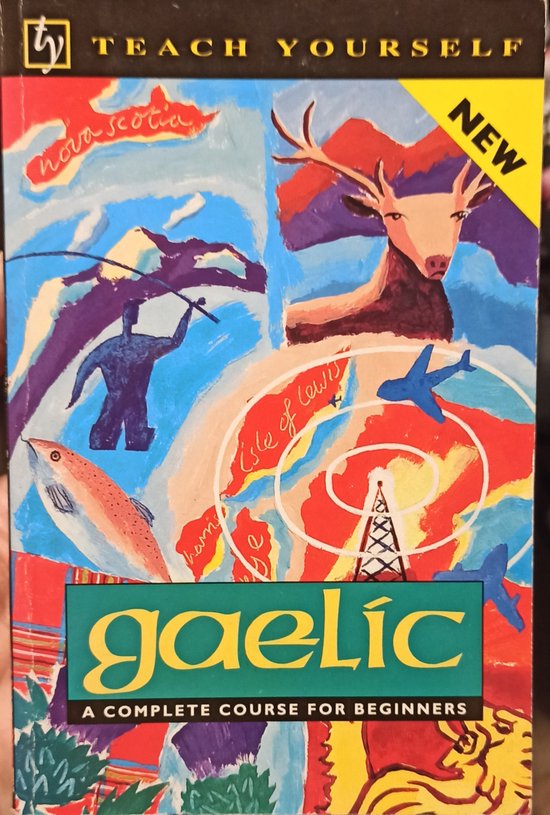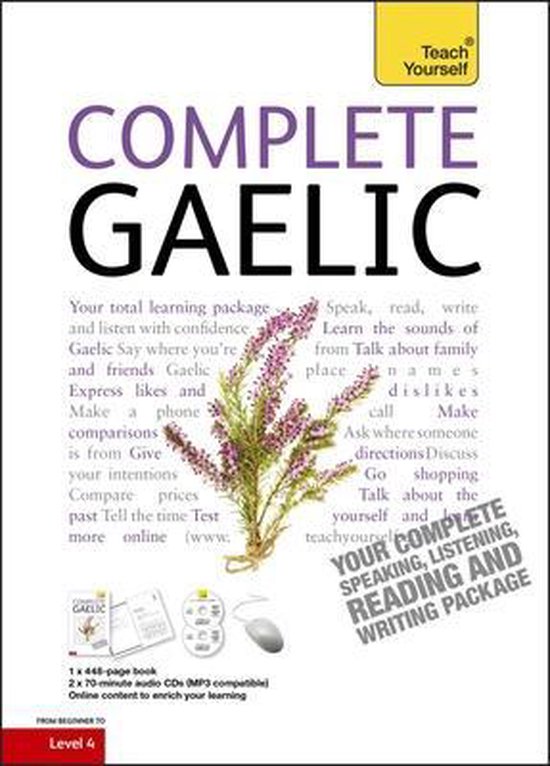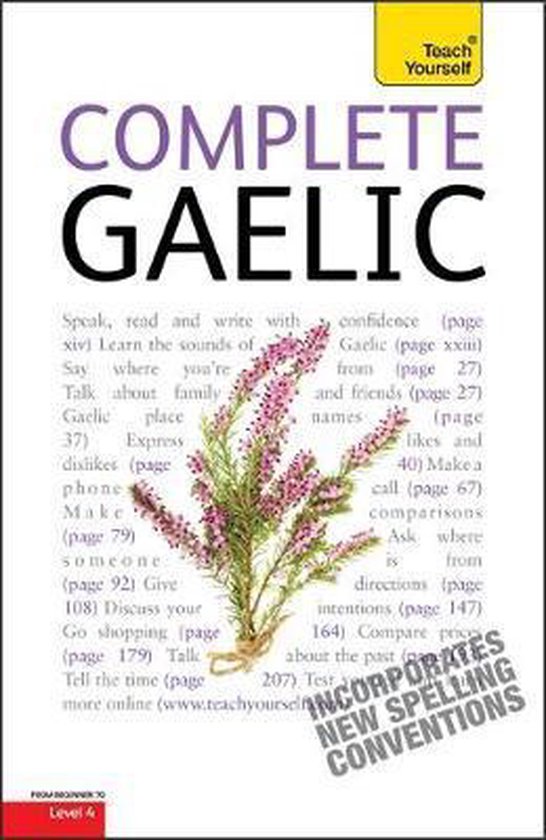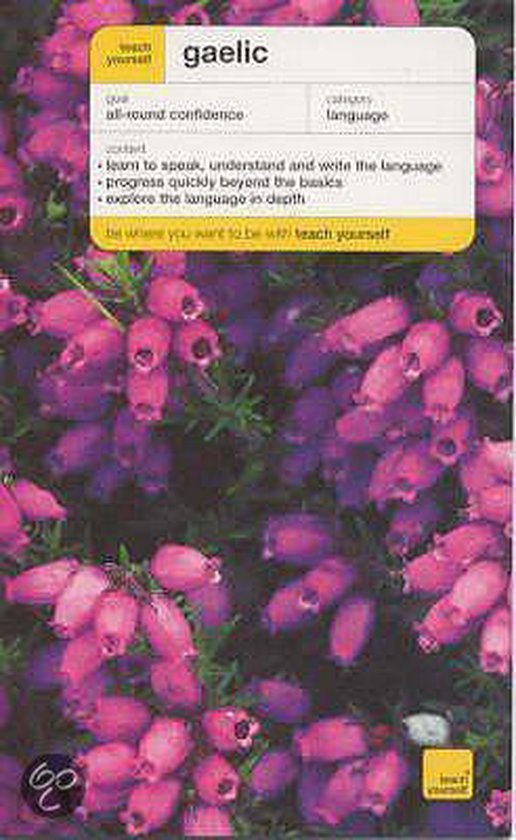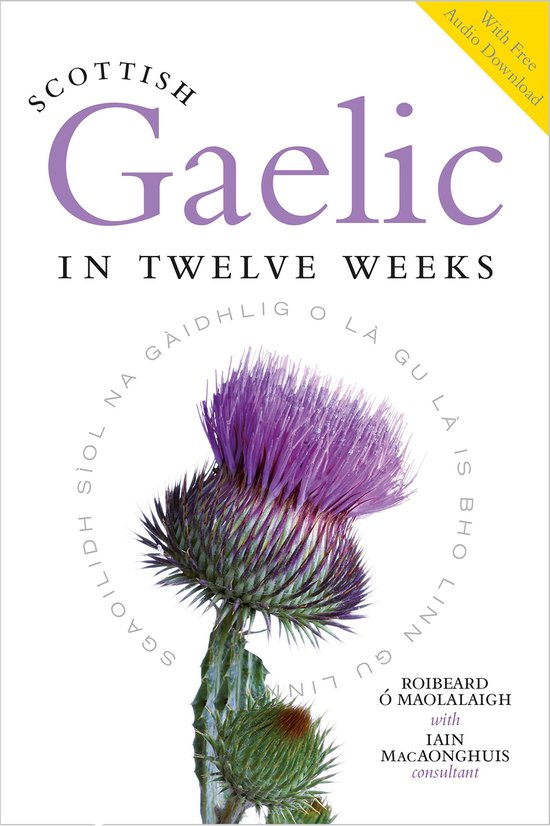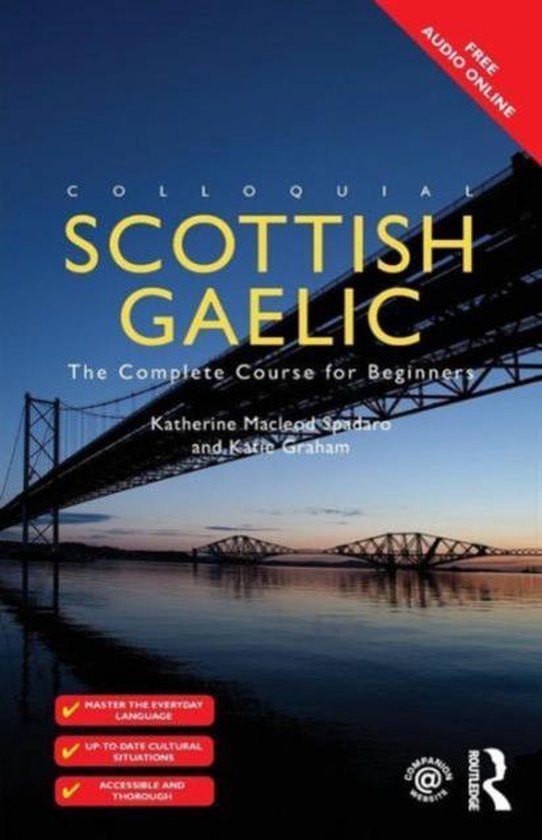This is a complete course in spoken and written Gaelic. If vou have never learnt Gaelic before, or if your Gaelic needs brushing up. Teach Yourself Gaelic is for vou.
Boyd Robertson and lain Taylor have created a practical course that is both fun and easy to work through. They explain everything clearly along the way and give vou plenty of opportunities to practise what vou have learnt. The course structure means that you can work at your own pace, arranging your learning to suit your needs.
Based on the Council of Europe’s Threshold guidelines on language learning, the course contains:
® A range of graded units of dialogues, culture notes, grammar and exercises
® A step-by-step guide to pronunciation
® An extensive grammar summary
® A Gaelic-English vocabulary list
By the end of the course you’ll be able to cope with a whole range of situations and participate fully and confidently in the life of Gaelic-speakers.
Failte chun na Gaidhlig Welcome to Gaelic
Scottish Gaelic is one of six modern Celtic languages. The Celtic languages fall into two groups: Gaelic and British. Scottish Gaelic, Irish and Manx belong to the Gaelic group and Welsh, Breton and Cornish to the British group. Cornish and Manx have, however, come close to extinction this century. Like most other European languages including English, French and Russian, the Celtic languages belong to the IndoEuropean family of languages, and older versions of the modern Celtic languages were spoken in a large part of Europe at the height of Celtic avilisation. Who is the course for? This course is designed for the absolute beginner, working alone or as part of a group, who wishes to communicate with other speakers of the language in everyday situations using functional, practical language. You will learn, among other things, how to give information about yourself and ask for similar information about others, carry out a transaction in a shop or restaurant, ask for directions, express likes and dislikes, make requests or suggestions, express agreement or disagreement, report what someone said and so on. Background information about the language and culture of Gaelic-speaking areas ig also provided. There are many reasons for wishing to learn Gaelic. It may be that you want to learn the language out of a general interest in languages, Perhaps you already speak a Celtic language and want to learn another, Your reasons might be to do with family background: you may have been born and brought up overseas but have family roots in Scotland. In some cases, Gaelic might have been in your immediate family background, spoken by parents or grandparents or other close relatives and you may have a desire to regain your ancestral language. On the other hand, you may be aware of the importance of the Gaelic element in Scottish history and life and may want to get an insight into the language and its background. Some will have special interests such as music, literature, hill-walking and sailing and be aware that a knowledge of Gaelic would enhance their appreciation of these experiences. The recent growth in Gaelic-speaking television programmes may have aroused your interest and your desire to gain more immediate access to the language rather than rely on subtitles. Or you may have a more practical purpose if you have moved to a Gaelic-speaking area, have a Gaelic-speaking partner or a job in which knowledge of the language would be an advantage. Whatever your reason for learning Gaelic, this course will equip you with the skills you need to become proficient in the language. How to use this course Start with a careful study of the alphabet and pronunciation. Gaelic is very different from English both in terms of sounds and the written word. It is, therefore, important to devote some time to studying the guidance offered in this section. Each unit of the course follows the same pattern and has the following elements: - e Á summary of what you will learn in the unit. e Còmhradh (Dialogue): These are based on realistic, everyday situations and introduce the main expressions and language structures that you are going to use. e Faclair (Vocabulary): This gives you all the new words and phrases that occur in the Còmhradh. e Mineachadh (Explanation): Certain linguistic points which are featured in the Còmhradh are explained in this section. This does not appear in every unit. e Obair (Exercises): Two or three exercises appear in this section. The exercises are usually of the true/false and question/answer variety and are based on the Còmhradh. The exercises are designed to help you find out if you have understood the Còmhradh. e Abairtean cudromach (Key expressions): The language points listed at the beginning of each unit are expanded on in this section which highlights the key expressions arising in the unit. e Gràmar (Grammar): Using real examples, this section explains the main grammatical structures used in the Còmhradh. Grammatical terms, although kept to a minimum, are used and explained as clearly and as simply as possible. e Obair eile (Further exercises): These exercises help you practise the vocabulary and grammar of the unit. In this way you can test your own progress and see how to use the words, phrases and language patterns you have learnt. The exercises are a selection of gap-filling, matching, true/false, multiple choice, question/answer, rearranging text and other reading and writing tasks. The correct answers are given in Na Freagairtean (Key to the exercises) at the end of the book. e Fiosrachadh (Background information): This section (included in Units 1-12 only) provides information about Gaelic language and culture, and about life in the Gaelic-speaking areas. Some new vocabulary is introduced in these sections. Working through each unit e Read the list of language points to find out the purpose of the unit. e Study the Còmhradh and the vocabulary in the Faclair. e Read the explanations given in the Mìneachadh section, where such a section is included.
